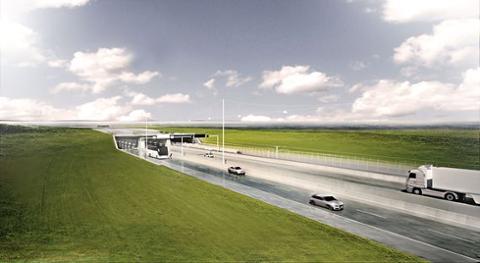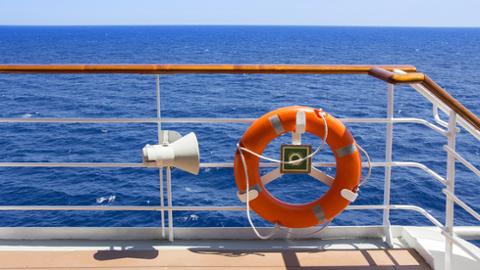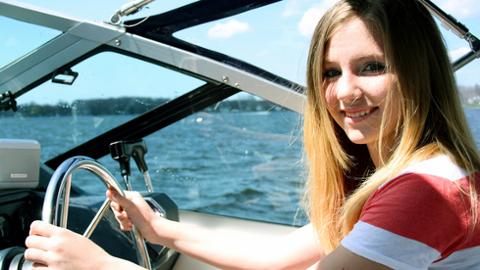
Source: BMDV
The main advantages of water-borne transport for both national economies and for the environment are its unrivalled low macroeconomic costs per tonne-kilometer and the additional function of waterways as an environment for living and recreation. This is why the Federal Government pays great attention to water-borne transport in an effort to cope with the predicted traffic increase in an environment-friendly and cost-effective way.
Networked water
The Federal waterway network in Germany comprises about 7,350 kilometres of inland waterways, of which roughly 75 percent are rivers and 25 percent canals. The Federal waterways also include some 23,000 square kilometres of lakes. The installations along the Federal waterways include, among others, 450 locks and 290 weirs, two ship lifts operated by the Waterways and Shipping Administration, 15 canal bridges and two dams. The Federal Waterways and Shipping Administration (WSV) as an executive agency of the Federal Ministry for Digital and Transport is responsible for ensuring safe, smoothly flowing and thus economically efficient shipping traffic. The tasks of the WSV comprise the maintenance, operation as well as the upgrading and construction of the federal waterways including state-owned facilities.
The main freight inland waterway network includes the Rhine (with its tributaries Neckar, Main, Mosel and Saar), the Danube, sections of the Weser, Elbe and Oder, as well as some canals linking these major waterways.
They form an essential component of the "wet" Trans-European Transport Network (TEN-T) and, accordingly, must be maintained and upgraded in an effective and efficient condition. In particular in inland waterway traffic, bottlenecks in the network must be eliminated to increase its capacity. The North Sea and the Baltic Sea are accessible via 757 kilometres of waterways navigable by sea-going ships. These waterways form the connection to and from the German seaports to ensure maritime transport operations. The countries between the Black Sea and the North Sea can be reached by vessels via the Danube, the Main-Danube Canal, the Main, and the Rhine. The wet East-West thoroughfare is formed by the canal network linking the Rhine and the Oder. There are more than 100 modern public sea and inland ports in this country. 56 of the 74 metropolitan areas in Germany are linked via waterways.
Inland water transport
Up to 240 million tonnes of bulk goods are transported per year via the German Federal waterways, which amounts to around 65 billion tonne-kilometres. This equals almost 75 per cent of the goods transport by railway in this country or about 14 million lorry journeys. Moreover, some 1.5 million twenty-foot equivalent units (TEUs) of containers are carried via inland waterways, which corresponds to another 700,000 lorry journeys. This way, inland shipping makes a significant contribution to satisfying the industry's demand for transport services, which are delivered on schedule and in a cost-effective and environmentally compatible manner. German inland shipping and inland ports keep around 400,000 people in work. In addition, inland passenger vessels, including river cruise ships, are also growing in economic significance. Many millions of tourists travel in them each year, enjoying the delightful waterside landscapes.
Maritime transport
In 2016, the German North Sea and Baltic Sea ports handled around 296 million tonnes of cargo, a third of which were container movements. In the passenger transport sector, over 30 million passengers arrive at and depart from German seaports each year, around 13 million of whom travel on international services. Domestic coastal shipping in Germany consists mainly of services to the islands of Eastern and Northern Frisia. International passenger transport is predominantly on the Baltic Sea, especially services to Scandinavia.
Water - more than just for transport
Over and above their environment-friendly transport function, the Federal waterways fulfil a number of other functions. They supply drinking and domestic as well as irrigation water, they feed power stations, they are used for waste water disposal and for the removal of floodwater, and they offer amenities for fishing. In addition to providing a habitat for aquatic flora and fauna, the Federal waterways are valued highly as places of rest and recreation for the population. The Federal Programme “Blue Ribbon Germany” (Blaues Band Deutschland) has been launched to restore the German waterways to a near-natural state. The Federal Ministry for Digital and Transport is a co-initiator of this Programme. With an interconnecting network of nearly 10,000 kilometres of Federal and state inland waterways, the many attractive lakes, and 23,000 square kilometres of navigable waterways on the North Sea and the Baltic, Germany is an attractive region for watersports in the heart of Europe. Further information can be found under the watersports heading.
Maritime safety
Maritime safety is guaranteed and continuously improved by a multitude of international conventions.
Maritime transport economy
The maritime industry in Germany is a sector of the economy with excellent prospects for the future and is of great importance to the economy as a whole.



